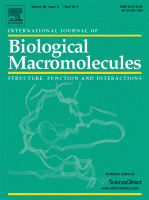Nešporová, K., Matonohová, J., Husby, J., Toropitsyn, E., Stupecká, L. D., Husby, A., Suchánková Kleplová, T., Streďanská, A., Šimek, M., Nečas, D., Vrbka, M., Schleip, R., & Velebný, V. (2023).
Injecting hyaluronan in the thoracolumbar fascia: A model study.
International journal of biological macromolecules, 253(Pt 3), 126879
https://doi.org/10.1016/j.ijbiomac.2023.126879
Abstract
Hyaluronan (HA) has been recently identified as a key component of the densification of thoracolumbar fascia (TLF), a potential contributor to non-specific lower back pain (LBP) currently treated with manual therapy and systemic or local delivery of anti-inflammatory drugs. The aim of this study was to establish a novel animal model suitable for studying ultrasound-guided intrafascial injection prepared from HA with low and high Mw. Effects of these preparations on the profibrotic switch and mechanical properties of TLF were measured by qPCR and rheology, respectively, while their lubricating properties were evaluated by tribology. Rabbit proved to be a suitable model of TLF physiology due to its manageable size enabling both TLF extraction and in situ intrafascial injection. Surprisingly, the tribology showed that low Mw HA was a better lubricant than the high Mw HA. It was also better suited for intrafascial injection due to its lower injection force and ability to freely spread between TLF layers. No profibrotic effects of either HA preparation in the TLF were observed. The intrafascial application of HA with lower MW into the TLF appears to be a promising way how to increase the gliding of the fascial layers and target the myofascial LBP.

